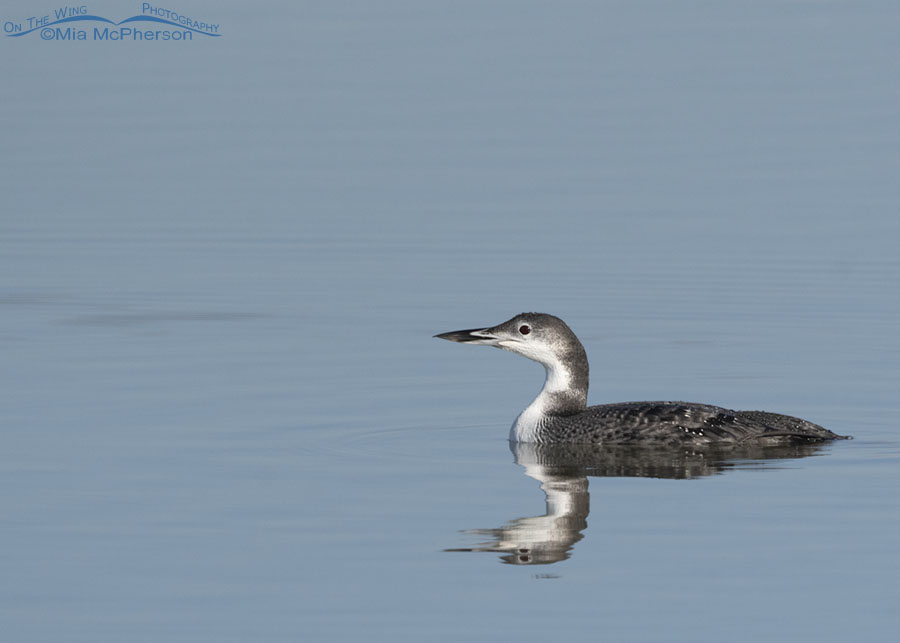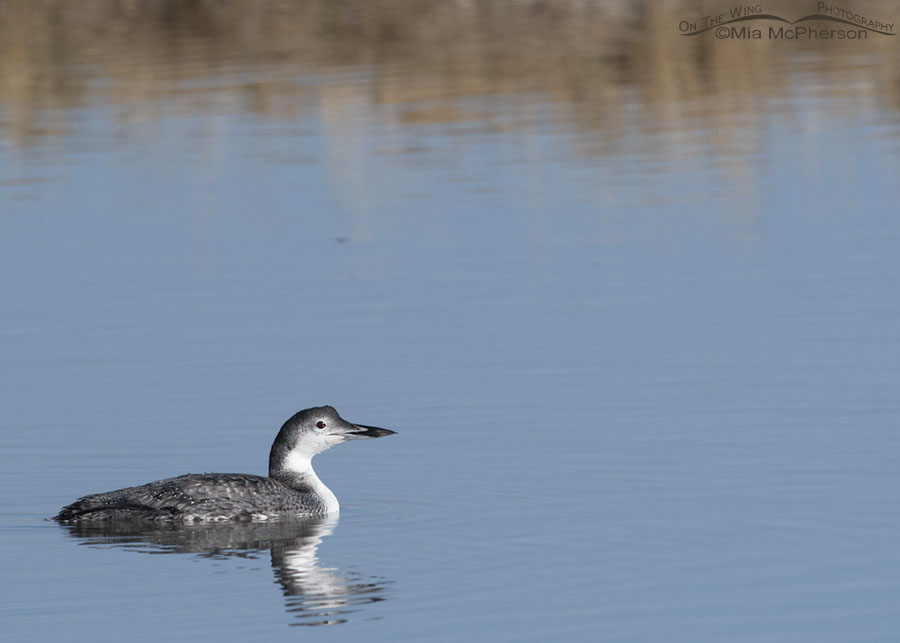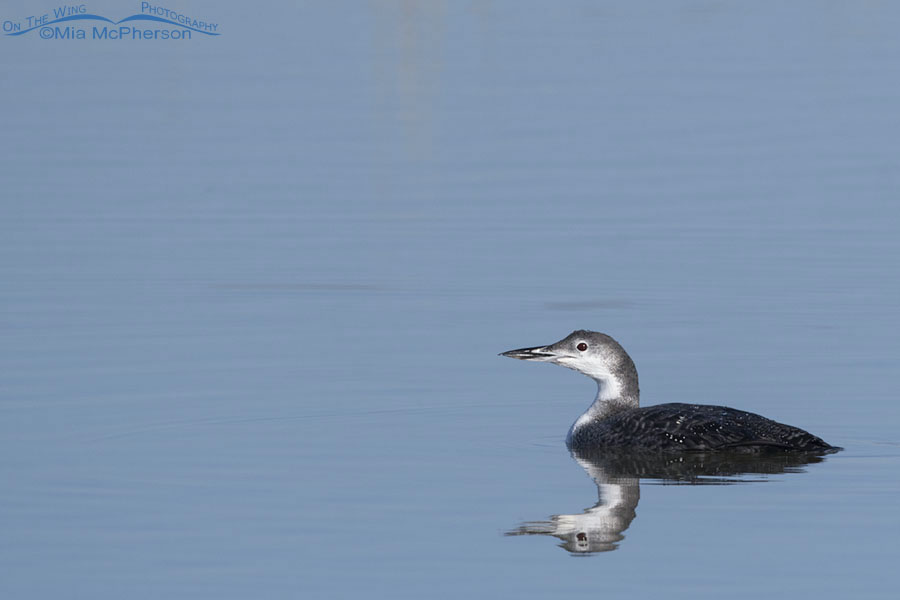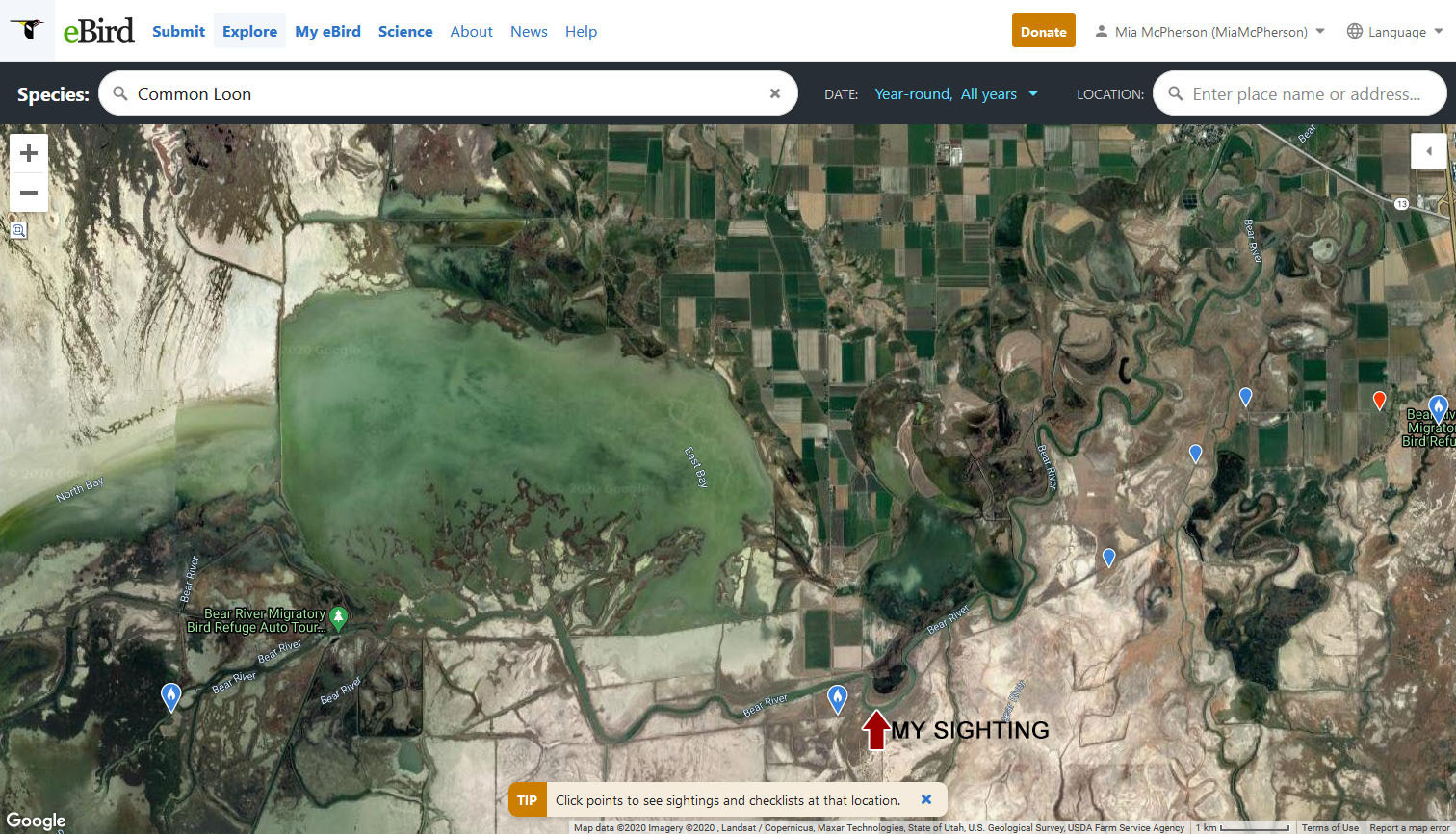 Nonbreeding adult/immature Common Loon on the Bear River – Nikon D500, f7.1, 1/4000, ISO 400, Nikkor 500mm VR with 1.4x TC, natural light
Nonbreeding adult/immature Common Loon on the Bear River – Nikon D500, f7.1, 1/4000, ISO 400, Nikkor 500mm VR with 1.4x TC, natural light
Bird photography was a little slow at Bear River Migratory Bird Refuge yesterday morning until I spotted a Common Loon floating on the Bear River. I don’t see Common Loons all that often down that low in the valley so I was excited to take photos of the loon as it foraged, dove and resurfaced on the calm water of the river. Until yesterday all of my Utah sightings of Common Loons have been high in the Wasatch and Uinta Mountains on reservoirs and alpine lakes.
This Common Loon is most likely migrating and set down on the Bear River to refuel and rest.
 Common Loon floating on the Bear River – Nikon D500, f7.1, 1/4000, ISO 400, Nikkor 500mm VR with 1.4x TC, natural light
Common Loon floating on the Bear River – Nikon D500, f7.1, 1/4000, ISO 400, Nikkor 500mm VR with 1.4x TC, natural light
I labeled this Common Loon as nonbreeding adult/immature. The sexes have the same appearance except that adult males are slightly larger than females and when you only have one bird in front of you it is not possible to compare sizes.
 Common Loon on the Bear River – Nikon D500, f7.1, 1/4000, ISO 400, Nikkor 500mm VR with 1.4x TC, natural light
Common Loon on the Bear River – Nikon D500, f7.1, 1/4000, ISO 400, Nikkor 500mm VR with 1.4x TC, natural light
I could wish that the Common Loon had been closer but honestly I am just glad I found it. When I first saw the black and white plumage while traveling down the road my brain registered Western/Clark’s Grebe until I saw its large bill and I knew immediately that it was a Common Loon.
 My Common Loon sighting on the Bear River (Click the graphic to view larger)
My Common Loon sighting on the Bear River (Click the graphic to view larger)
I was curious as to how many times Common Loons had been found on the Bear River so I looked that up last night on eBird year round for all years and was surprised at how few sightings there have been reported. Not everyone uses eBird though so there may be more than show up on the graphic above. There sure aren’t many Common Loon sightings for that section of the Bear River!
To the far right of this graphic there is a red marker which indicates a Common Loon sighting by Dickson Smith on 29 October, 2020. I can only wonder if the Common Loon he saw was the same bird I found the next day. It is possible that it is or it might be a different loon. Who knows, there might be two of them. I don’t like to guess though.
My eBird checklist is here. Dickson’s eBird checklist is here.
Spotting a Common Loon in an uncommon location was the absolute highlight of my morning.
Life is good.
Mia
Click here to see more of my Common Loon photos plus facts and information about this species.


Very, very, interesting post. I love the map of your sightings. The loon pics are marvelous too. Thanks Mia.
What an excellent find. I hope that she found other loons on her travels though. Migrating on your own sounds hard work and lonely. My ignorant self assumes that birds usually migrate in company…
Great find, I wish I could see them more often, they are always way out on the reservoirs.
Beautiful shots, Mia. And thank you for the image of Bear River and the surrounds. I know it will help me when visualizing your adventures!
Good catch, Mia! I was at Bear River MBR yesterday also, but I only found coots and a heron. I think that the shotgun noise early in the morning did not help me (LOL).
Great shot, interesting post. Thanks.